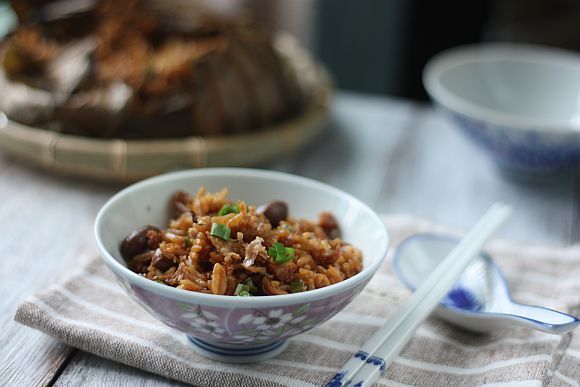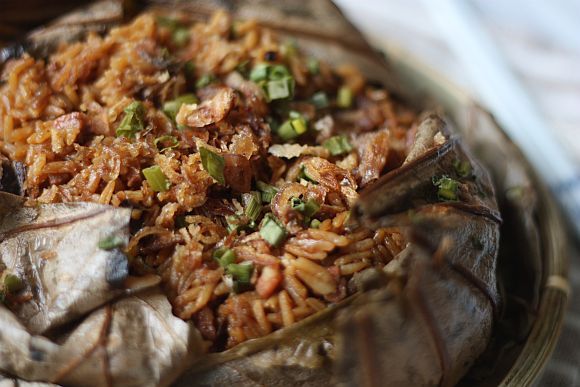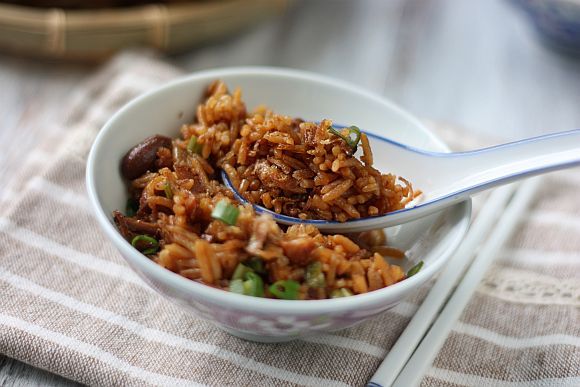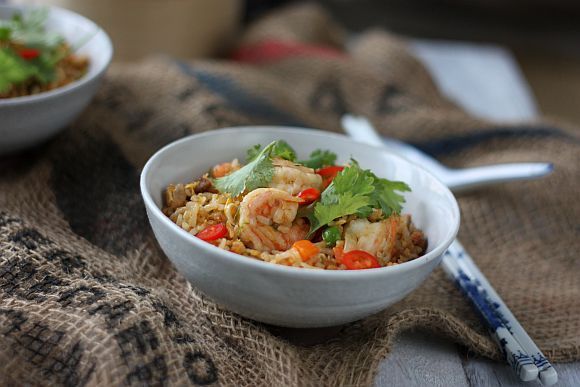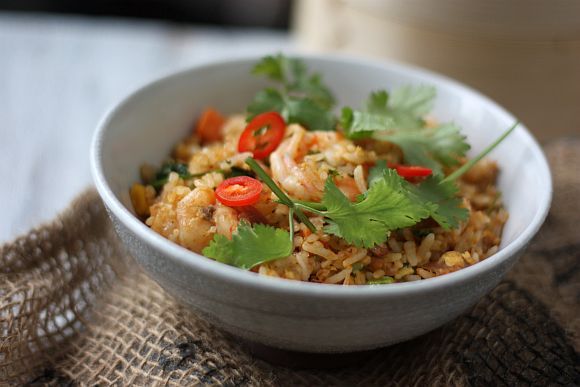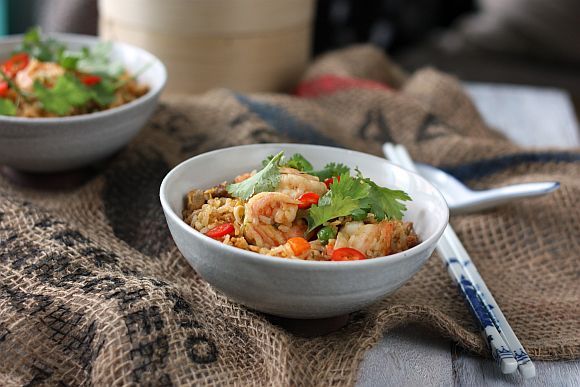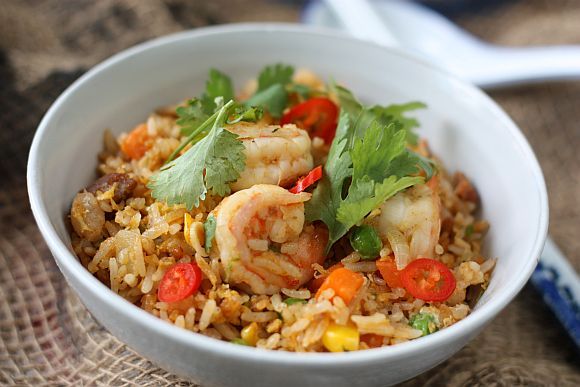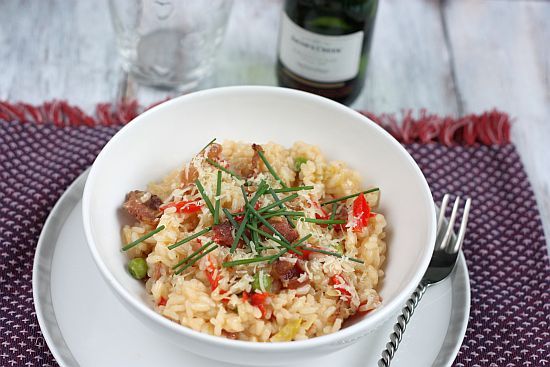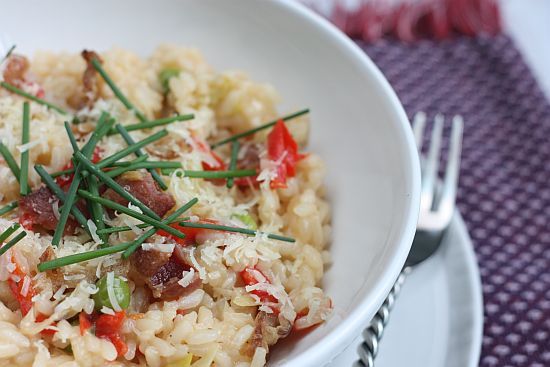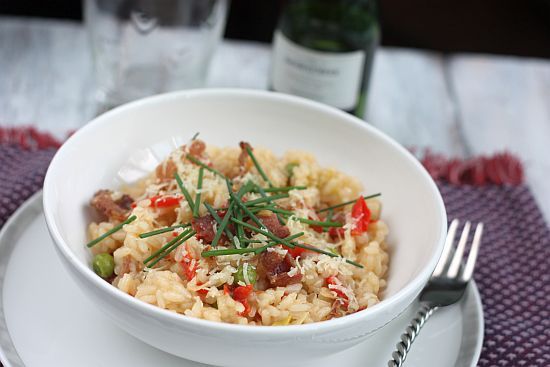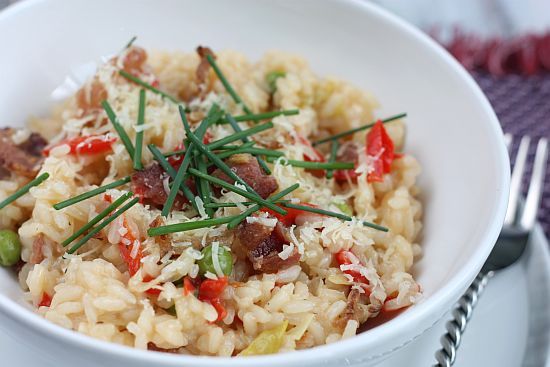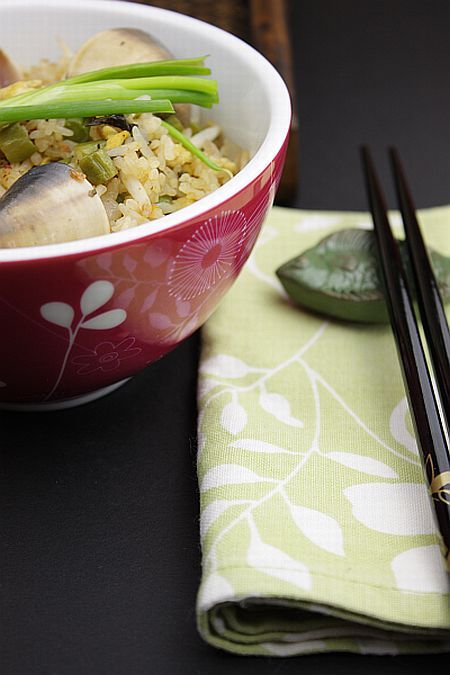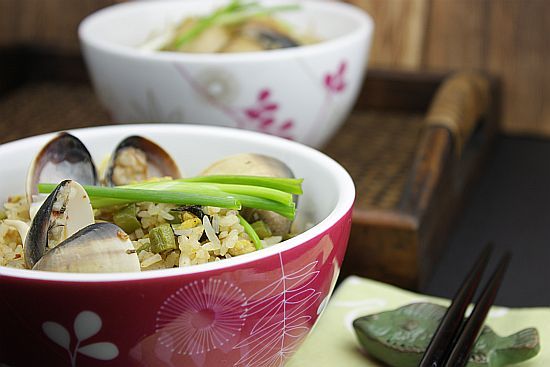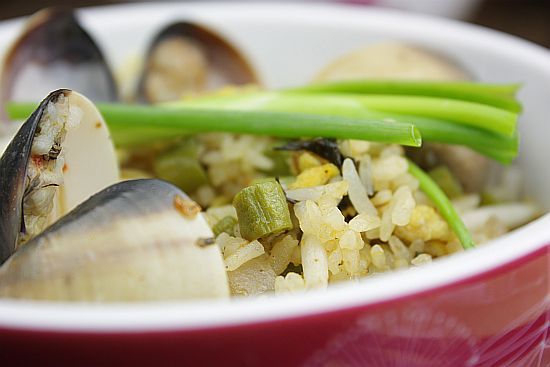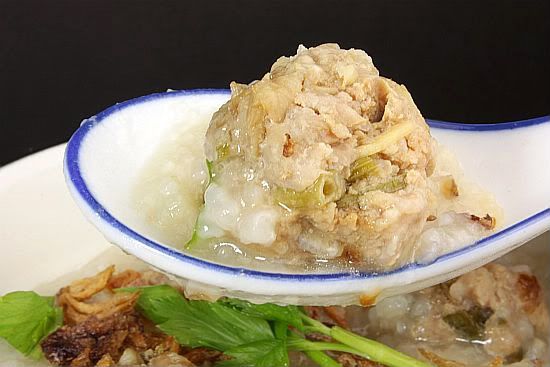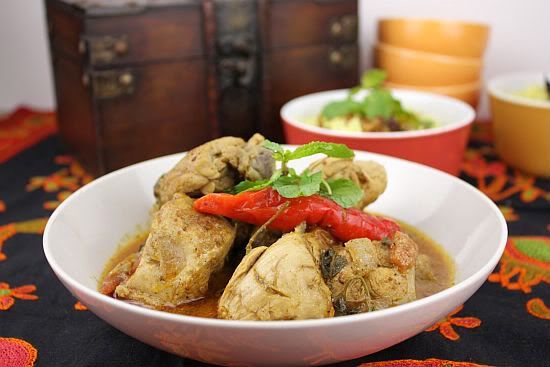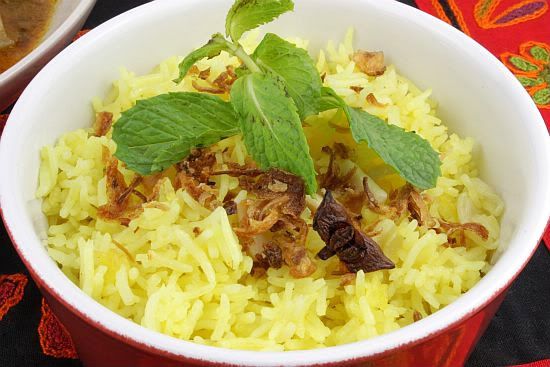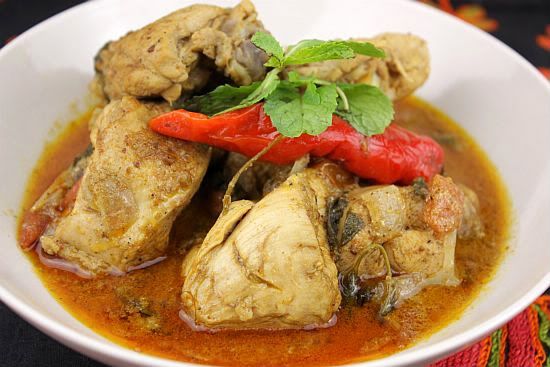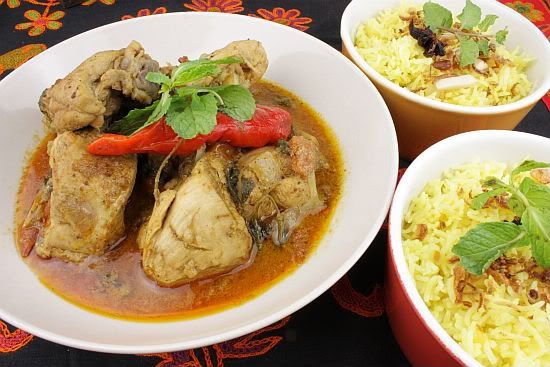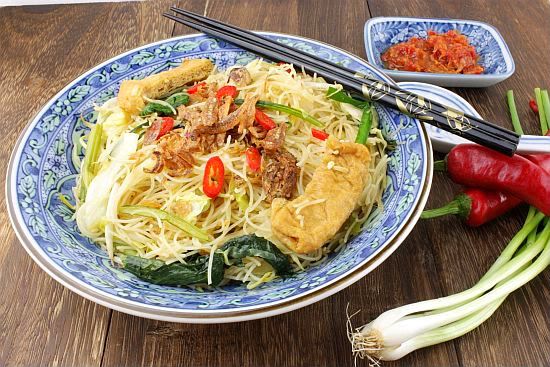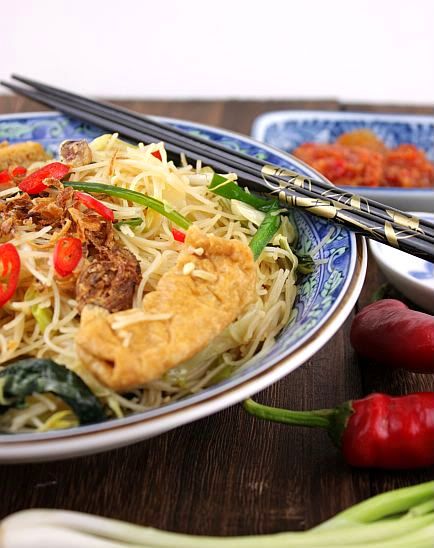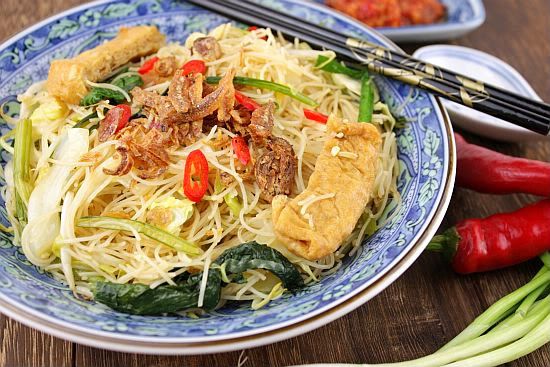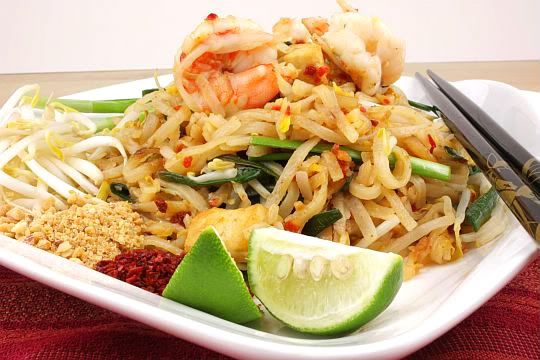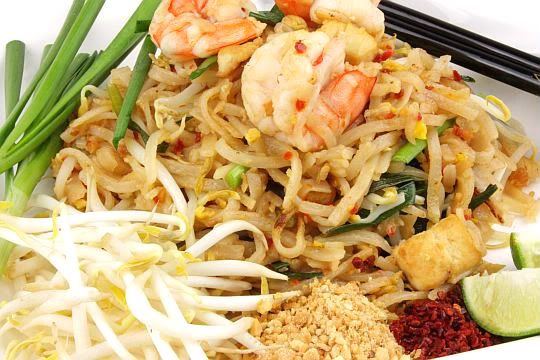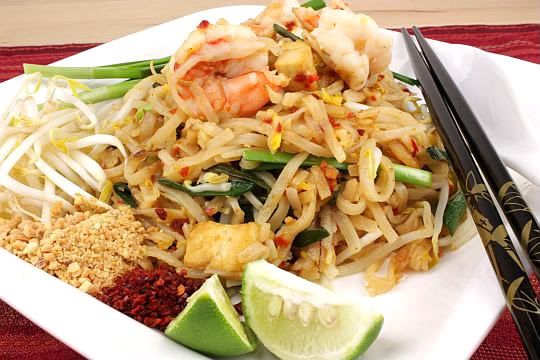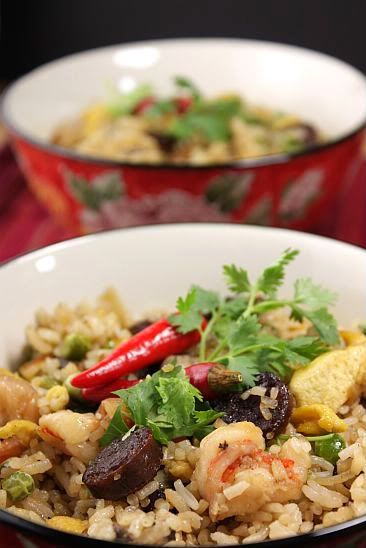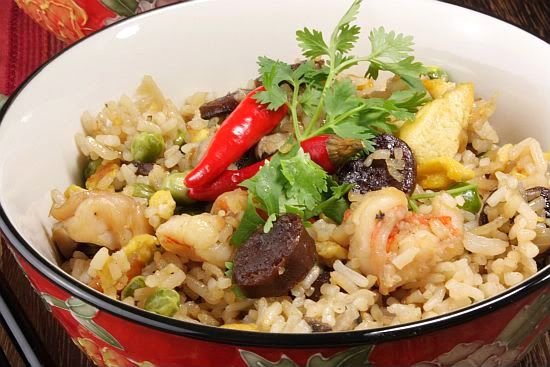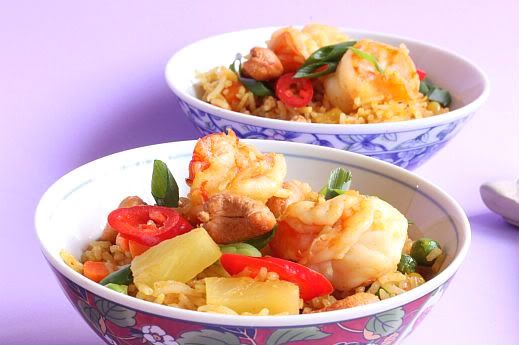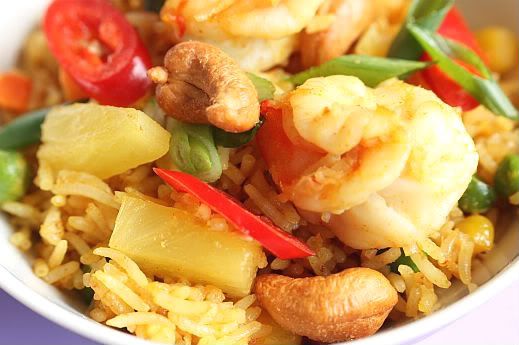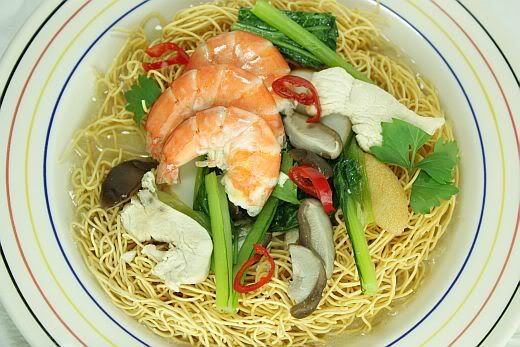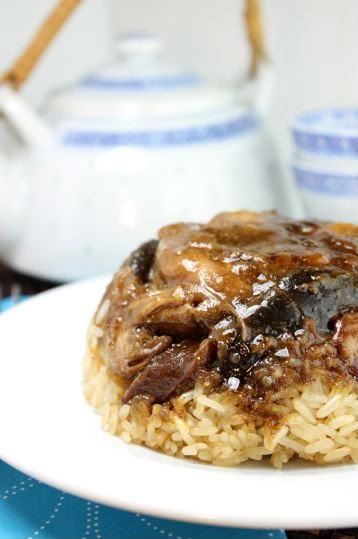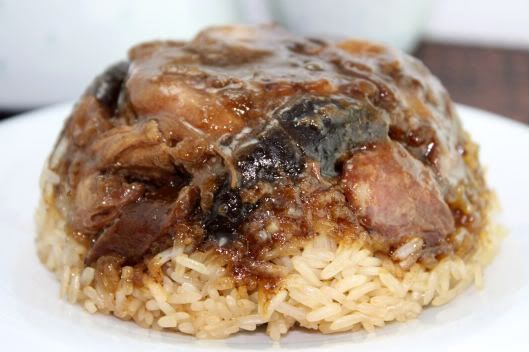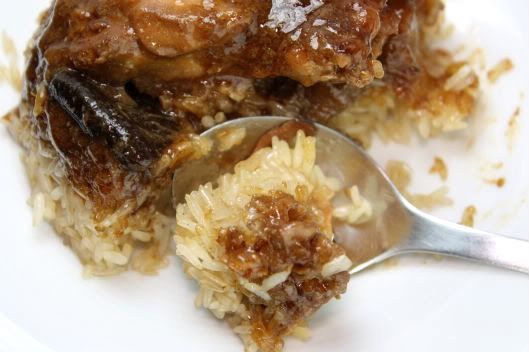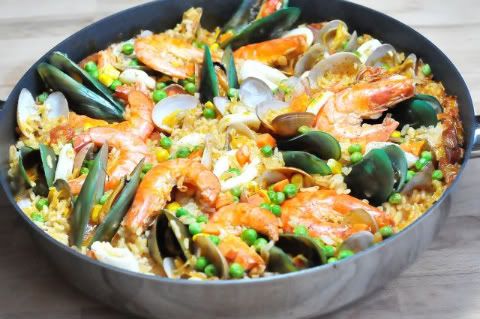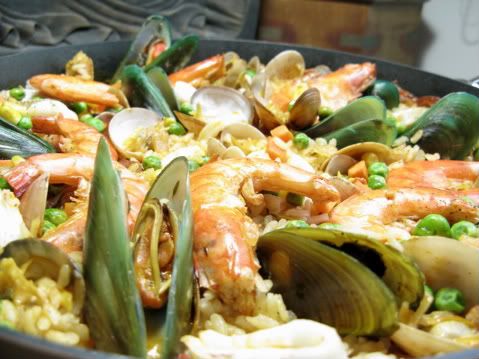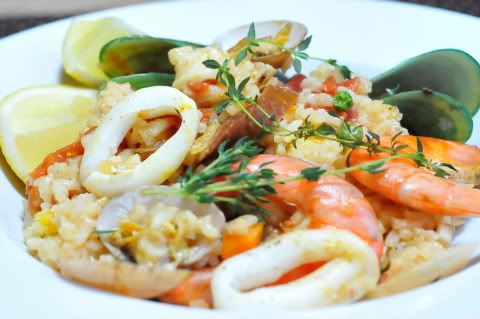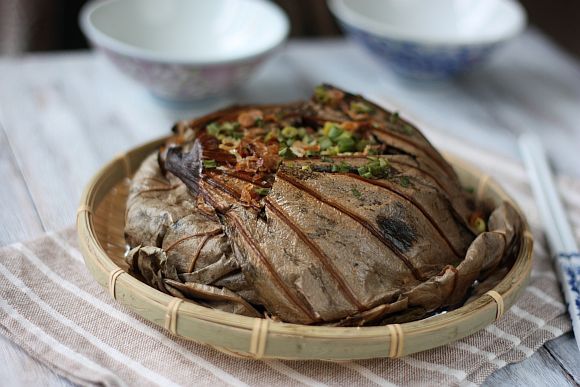
Lotus leaf used in steaming food gives out a fantastic dark tea-alike aroma and colour to the grains. In the old days, people would stuff all sorts of ingredients into the lotus steam rice as this dish would constitute an entire meal by itself. The dish is now much simple in comparison, with fewer ingredients and the recipe being less complicated. You can of course use the same recipe and substitute it with glutinuous rice instead.

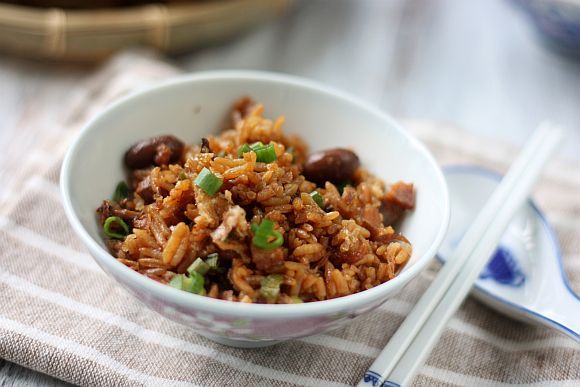
Savoury Lotus Leaf Steamed Rice
Serves 4 to 5
Ingredients:
1/4 cup dried shrimp
5 dried black chinese mushrooms (soak in warm water until soften)
2 large dried lotus leaves
1 Tbsp vegetable oil
2 shallots, minced
1 clove garlic, minced
1/2 tsp finely minced fresh ginger
2 Chinese sausages, cut diagonally into 1/8-inch-thick slices
1 small can of braised peanuts, drained
1/2 cup of diced chinese roast pork or char siew
1/4 cup diced chinese celery
1 teaspoon chopped cilantro (Chinese parsley)
2 Tbsp light soy sauce (add more if required)
1 Tbsp dark soy sauce
1 tsp oyster sauce
1 Tbsp sesame oil
1/2 tsp white pepper
4 cups cooked medium-grain rice (cooled)
For Garnishing: Sliced fresh red chillies, fried shallots and chopped cilantro
Method:
1) Cut the stems off the mushrooms and thinly slice caps. Set aside.
2) Bring some water to a boil in a large pan. Then plunge the lotus leaves into boiling water and cook for 2 minutes or until softenen. Drain well and set aside.
3) Place a wok or large frying pan over high heat until hot. Add the vegetable oil, swirling to coat sides. Then add the shallots, garlic, ginger, sausage, roast pork and shrimp and stir-fry for about 2 minutes.
4) Then add the celery, cilantro, peanuts and mushrooms and stir-fry for another 1 minute.
5) Add in all the seasonsing and then stir in the cooked rice. Separate the grains with the back of a spoon and mix well. Remove from heat.
6) Spread one lotus leaf on work surface. Cover with second leaf. Then place the rice mixture in center of lotus leaves. Fold edges of leaves over rice so rice is completely covered.
7) Place steaming rack in a wok or a steamer pot. Pour water to just below level of rack and bring to a boil.
8) Once the water is boiling, place lotus leaf packet on a heatproof dish and set dish on rack. Cover and steam, adding additional water if neccessary, for 30 minutes. Garnish and serve immediately.
Note: If you are using glutinuous rice, soak the glutinous rice in water overnight. Drain away the water. Then fry it with the ingredients and seasoning. Steam for 45 minutes or longer until cook.
